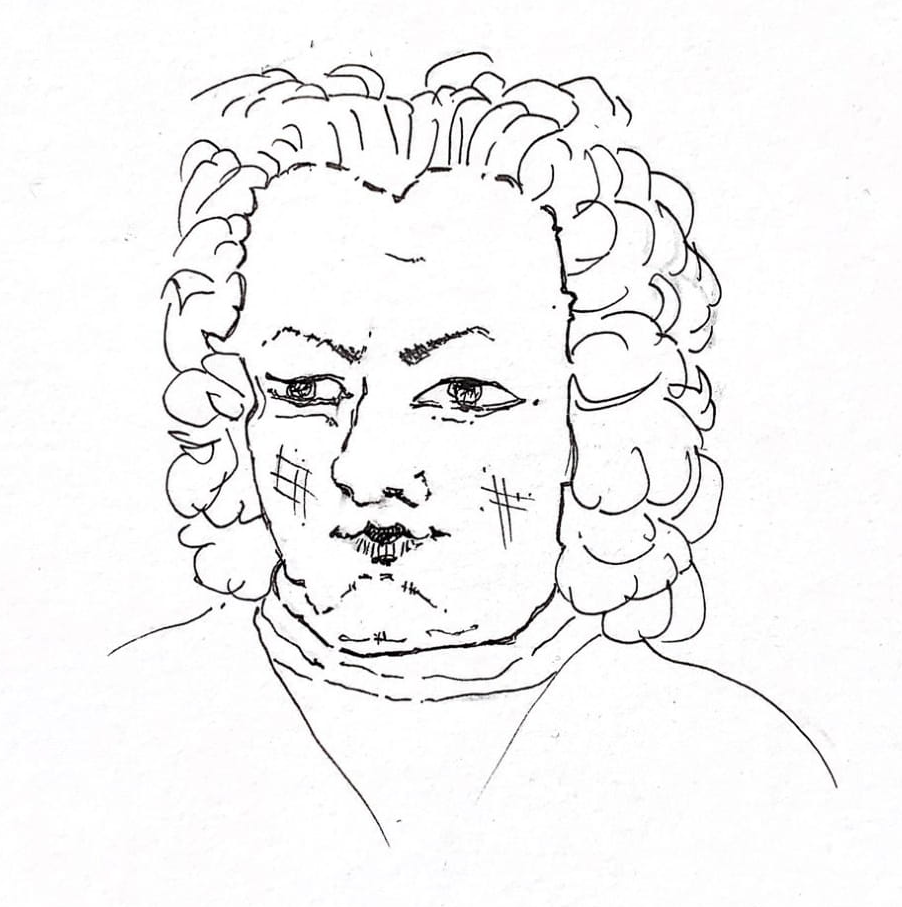Because this new year, 2023, began on a Sunday and this date is taken by BWV 143, -New Year’s day, the circumcision-, I have decided to allot BWV 152, which is the subject of this posting, to today, 8th January, the second Sunday after Christmas, as there is, in this cycle, no cantata, for this particular day. I have titled it, as January 1st, to show its true calendar day.
This is a cantata with difference; no strings, no chorus and no closing chorale.
Instead, chamber-music-like, it highlights Viola d’amore, Viola da gamba, oboe and recorder, with organ accompiament,
-which needs to be realised, from scratch, the bass line sometimes, but not always, taken by the gamba-.
There are only 2 solo voices, soprano and bass, -3 bass movements, one soprano- and a closing duet.
The opening movement is an instrument only sinfonia.
1/Sinfonia
Christmas at Weimar left musicians exhausted and the 30th December, 1714 was no exception.
With string players at rest, today, chamber music is on hand, refreshing and revealing in an unusual combination of instruments, -2 x wind, 2 x string- and organ, itself a sort of continuo, without any figuration.
After a short and decorative introduction, this quintet, 4+1, with its organ accompaniment, gets going on a relatively long and purely instrumental ‘permutation-fugue’, one that contains elements of both fugue and canon. Accompanied from the start, this drops out at bar 74, resuming at 93, where the bass line assumes the rhythmic shape, but not the notes, of the subject, something that it did do, in similar circumstances, at bar 32.
2/Aria:
‘Tread the path of faith,
as God has laid the stone that supports and carries Zion.
Do not stumble on it, or against it!’
This walking text finds itself with walking music. Text and walker seem, at the start, out of sync and this is confirmed by the singer who starts and continues, initially, in the same spirit and the same error, of the oboe,
-but with a difference. His music and line grows, to be independent of both oboe and continue, surely a reflection of all such walks, where text is so often received and interpreted, in accordance with an individual walk. While text and walk, continue to be ‘apart’, the sung line takes a middle path, beautiful and strangely unifying, to all, surely how all nearly-new-year-walks should go?
The ‘stumble-bar’, 40, is nicely negotiated, where firstly, oboe and voice answer, then at 41, sync and dovetail and finally synchronise totally, bar 42.
3/Recitativo:
‘The Saviour is in Israel,
for fall and resurrection.
The precious stone is not at fault,
even if, by it, a terrible world wounds itself
and stumbles into hell,
by maliciously crashing into it and
not acknowledging God’s graces and mercy.
Blessed is the chosen Christian,
who makes this stone the foundation of faith,
finding salvation and redemption.’
Listen out for the great ‘Joyce-ian’ fall, – a downward leap, of an octave and a third, beginning of bar 3, -and the stumbling, bar 6 into hell, bars 7 through 8.
At the collision, -8 through 9, with the continuo skid-mark-, secco reict seems to naturally evolve into arioso.
The blessed Christian, begins a quest for salvation and redemption, bar 11, with a founding faith, on this stumbling cornerstone, continuo bass line and voice, finding salvation and redemption, together, in increasingly closer harmony.
4/Aria:
‘Stone, greater than any treasure,
help me, that always, I may build,
-and not wound,
myself on you, through faith, my foundation for joy.’
A colourful and sincere Soprano prayer, where recorder and viola illustrate those contrasting colours, in a backdrop to these sung words.
Threefold chords are not easily forgotten,
-and certainly not to be broken, as this serene and superb music, becomes the sounds that, themselves are actually these words.
Bach excels himself in understatement, this prayer hitting the spot, with the minimum of fuss. All we have to do is listen, wait, -and learn.
5/Recitativo:
‘Can the world’s wisdom, be turned upside down,
when the son of God leaves the throne of honour
and clothes Himself, in humanity, suffering as a human.
The greatest wisdom becomes, before God, stupidity.
What God says, reason cannot fathom.
Blind leaders mislead those who are blind in spirit.’
A horrific starting yelp, alerts us to the importance of what has been actually happening, at this time of the year.
A close examination of text and music, shows how closely Bach is interested in helping us to understand, with our hearing ears.
‘Reason that cannot fathom’, sees the vocal line drop, right down, bar 12, to those lowest, unfathomable levels and arioso is, again, not far from becoming, a norm.
6/Andante(duet)
Soul: ‘How shall I embrace you?
Jesus: ‘Deny yourself and give up everything.’
S: ‘How will I know eternal life?’
J: ‘Come to me, with faith and not fear.’
S: ‘Teach me, Saviour, to dislike the earth.’
J: ‘Through suffering, find joy.’
S: ‘Draw me and I shall follow you.’
J: ‘After humiliation and affliction, I will give you a crown.’
A repetitive rhythmic ostinato dominates this dialogue, both musically and rhythmically, as antiphonal and duet-moments, abound.
The final section, 66, through 77 suddenly becomes unmissable, as imitations and inspirations, take this quartet to places, that perhaps only a few moments ago, might have been felt, unimaginable.
